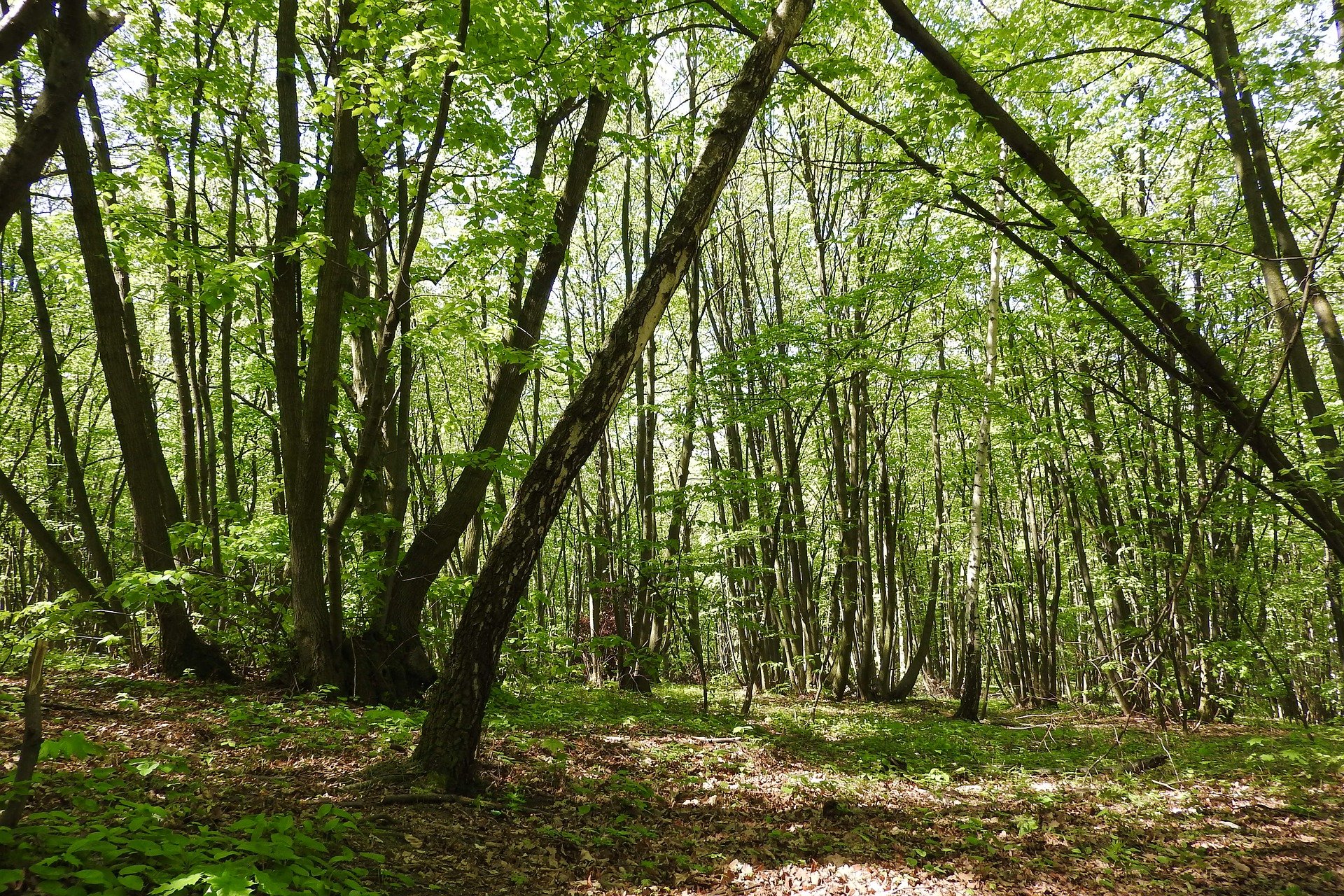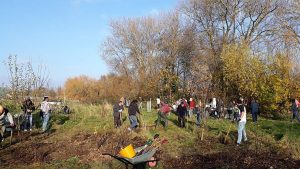Coppicing
The ancient skill of coppicing has been practised at least since Anglo Saxon times and possibly longer. As a traditional form of woodland management it served two important functions: to provide a renewable source of wood for fuel and fencing and to allow selected trees space to grow to full maturity for subsequent cropping as timber.
It also had a secondary, probably unintentional effect which was to let in light to the woodland floor, regenerating the plants and flowers growing there and their dependent wildlife. Coppice shoots also provided food for deer which may or may not have been welcome depending on the purpose of the wood. The word ‘copse’ denoted a wood that was once coppiced.
It is not necessary to have acres of land or a full blown wood to practice coppicing. In fact, if space is restricted, coppicing native shrubs and trees allows you to grow a greater range of species than there would normally be room for.
What is coppicing
Coppicing means cutting the tree down to ground level to allow new shoots to spring up from the base. Far from killing the tree, this practice encourages the tree’s natural power of regeneration, because it will encourage the tree to throw up new poles of wood, year after year.
Why coppice?
A coppiced woodland, even on a small scale, allows a broad range of plants, birds, mammals and insects to co-exist. The main tall growing trees such as oak, beech and ash provide the upper canopy for nesting birds. This is underplanted with a layer of smaller trees and shrubs which may be coppiced: white willow, wych elm, hornbeam, bird cherry, hazel and lime. Beneath this on the woodland floor, primroses, bluebells and other woodland plants flourish in the leaf mould and dappled shade provided by the trees above.
In the garden, coppiced trees will not produce blossom or berries but the young leaves and shoots produced in the spring will support a new generation of butterfly caterpillars and other leaf eating insects.
How to Coppice
Year 1 – Use pruners for small stems and a strong pruning saw for thicker ones. Cut the stems to a few inches above ground level.
Subsequent years: Depending on how fast the different species grow, some coppicing can take place every winter. It is usual to rotate the cropping so that there is a succession of available wood. Each individual tree or shrub should be left between five and seven years before coppicing again, allowing it to form a medium sized shrub. If the wood is not needed for a specific purpose, trees and shrubs may be coppiced whenever they outgrow their allotted space.
As the years go by, a coppiced tree will start to form a stool. Shoots thrown up from this stool should be cut back to within 5-8 cm (2-3”) of this old wood.
Shrubs and trees suitable for coppicing
- Ash (Fraxinus excelsior)
- Common alder (Alnus glutinosa)
- Downy birch (Betula pubescens)
- Elder (Sambucus nigra)
- Field maple (Acer campestra)
- Goat willow (Salix caprea)
- Hazel (Corylus avellana)
- Holly (Ilex aquifolium)
- Hornbeam (Carpinus betulus)
- Oak (Quercus robur)
- Silver birch (Betula pendula)
- Small leaved lime (Tilia cordata)
- White willow (Salix alba)
- Wych elm (Ulmus glabra)
Pollarding
Pollarding is another traditional method of restricting the size of trees and letting more light reach the ground.
Instead of cutting the stems to ground level, the trunk is cut at a height of 2-5 m (6-15’) leaving a permanent trunk called a bolling. New shoots then sprout from the bolling, keeping the wood out of reach of animals until it is cut to use. It is best to select a young tree for pollarding, before the trunk is too large. Older trees need to be done professionally. Pollarding is usually carried out on isolated trees or those in formal rows, not those in the centre of a wood where it would be difficult to work. Poles of wood can be cut from the tree every year, but re-pollarding only takes place every ten to twenty years.
Taking hardwood cuttings
The simplest way of propagating most deciduous shrubs and trees is by hardwood cuttings taken when the plants are just starting their period of winter dormancy.
Take several cuttings at the same time from several shrubs and prepare a nursery bed where they can grow on undisturbed for twelve months. Choose a sheltered site and dig over thoroughly, removing any weeds and stones.
Taking the cuttings:
Look for vigorous stems that have just completed a season of growth. They will be hard and woody with healthy buds all along the length of the stem. Using sharp secateurs cut the stem from the plant near the point where it joins the main branch or stem. Using a sharp knife, trim the cutting to 25-30 cm (10-12”) cutting just below a bud or leaf joint at the bottom and just above a bud or leaf joint at the top. To encourage rooting, cut away a thin piece of bark from one side of the base.
Planting the cuttings
Make a trench in the prepared ground by pushing in a spade and pulling it forwards several inches to form a narrow v-shaped trench. Put a 3-5 cm (1¼-2”) layer of coarse sand at the bottom to ensure good drainage.
Place the cuttings on the sand so that half to two thirds of the cutting will be below ground level. Set the cuttings 8-10 cm (3-4”) apart. Fill the trench with soil and firm down.
Aftercare
The cuttings should not be disturbed for a full twelve months. If cuttings are lifted by the frost, push them down again gently, so that the base is once again in contact with the sand at the bottom of the trench. Watering will only be needed in particularly dry spells – most likely in the summer months. Keep the area weed free.
By the following autumn, the cuttings should have rooted and have a few sets of leaves. These can be lifted and transplanted to their permanent position. If space is limited they may be put into adequate sized pots and grown on for one or two years. Any cuttings that have not rooted should be left in position for another year.
Plants from which to take hardwood cuttings:
- Broom (Cytisus scparius)
- Flowering currant (Ribes sanguineum)
- Honeysuckle (Lonicera periclymenum)
- Elder (Sambucus nigra)
- Ivy (Hedera helix)
- Wild privet (Ligustrum ovalifolium)
- Willow (Salix species)

Reproduced with permission of North West Parks Friends Forum







